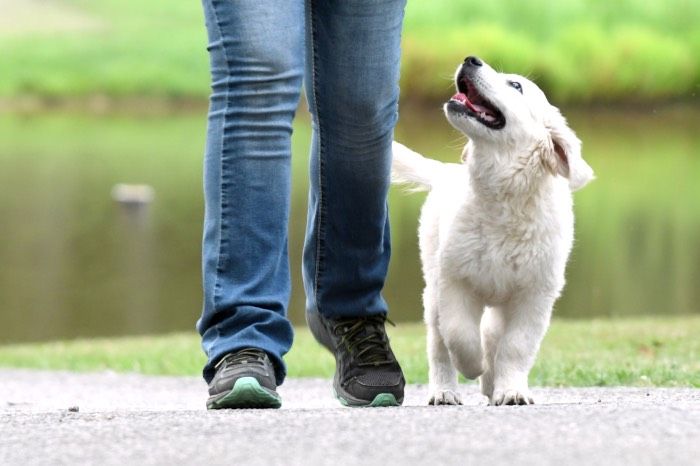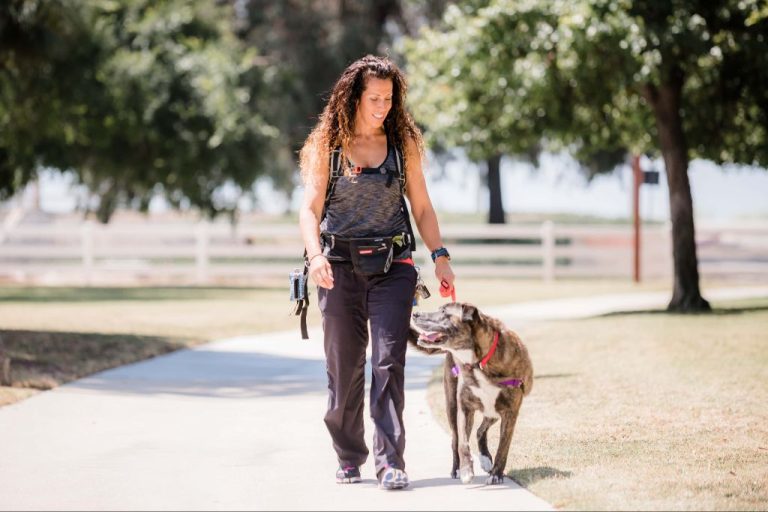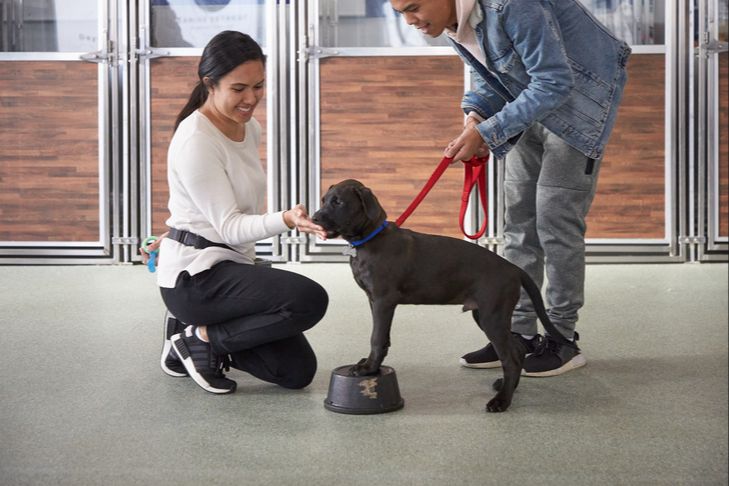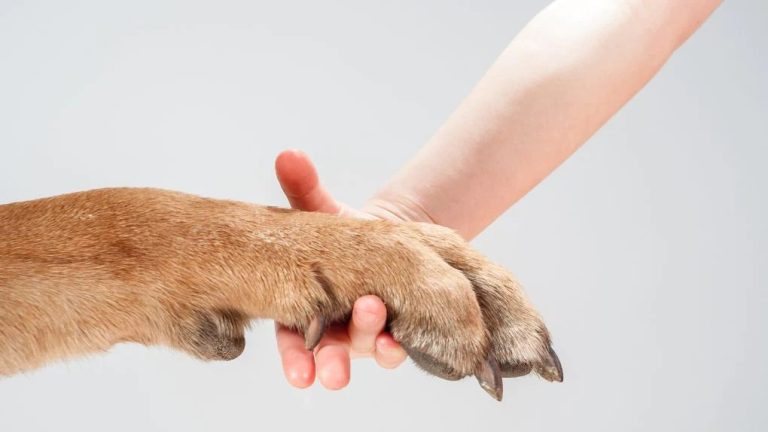Effective Leash Training Methods For Dogs
Leash training is one of the most important skills to teach your dog. A dog that walks properly on a leash allows the owner to take them more places and provides a better overall experience for both the dog and the owner. Having a dog that pulls on leash or acts out is stressful and can even be dangerous if the dog is large and powerful. According to a survey by the American Veterinary Association, over 80% of owners reported increased bonding and obedience through leash training their dogs (https://www.amenify.com/blog/how-to-train-your-dog-to-walk-on-a-leash). Proper leash manners allow a dog to comfortably explore new environments, meet new people, and get beneficial exercise and enrichment. Additionally, having control of your dog on leash is a legal requirement in many jurisdictions. Overall, leash training provides structure, builds communication skills, deepens the human-animal bond, and improves safety and enjoyment for pets and their owners.
Preparation
Proper equipment like collars and harnesses are essential for effective leash training. Choose equipment that is appropriate for your dog’s size and temperament. For pulling dogs, front-clipping harnesses like the PetSafe Easy Walk Harness redirect the dog back towards the owner when they pull, while martingale collars apply gentle pressure without choking (Source). For loose leash walking, traditional flat collars or slip leads paired with a double-ended leash provide maximum control. Adjust collars and harnesses properly so they are snug but not constricting. Finally, choose an appropriate leash length based on your dog’s size – 4-6 feet for medium to large dogs and 6 feet or longer for strong pullers.
Basic Commands
Teaching your dog basic commands is the foundation of effective leash training and establishing control and obedience. According to the AKC, the 5 essential commands to teach your puppy early on are: sit, stay, come, down, and heel https://www.akc.org/expert-advice/training/teach-your-puppy-these-5-basic-commands/
The “sit” command teaches your dog to plant their bottom on the ground and establishes that you are in control. Use a treat to lure your puppy into a sitting position. Say “sit” clearly and praise/reward when they comply. Practice this regularly until your puppy associates the verbal command with the action.
The “stay” command builds on “sit” by teaching your puppy to remain in place and not move until you release them. Start with short durations of stay and reward, gradually working up to longer periods. This is an important command for impulse control.
The “heel” command means your puppy should walk right next to you, without pulling on the leash or lagging behind. Hold a treat by your leg as you walk to encourage your puppy to stay by your side. Say “heel” and reward when they walk nicely. Keep training sessions short and positive.
Loose Leash Walking
One of the most important leash training techniques for dogs is teaching them to walk without pulling on the leash, known as loose leash walking. When a dog pulls on the leash, it’s not only uncomfortable for the human holding the leash, but it can also reinforce the pulling behavior in the dog.
A simple but highly effective method for training loose leash walking is the stop-start technique. As soon as your dog begins to pull on the leash, immediately stop walking and stand still. Don’t allow your dog to go any further. Wait until your dog stops pulling and the leash becomes loose again before continuing to walk. This teaches the dog that pulling results in stopping all forward progress.
It’s important to be very consistent with this method. According to the article “Teach your dog to walk on a loose leash” from Animal Humane Society https://www.animalhumanesociety.org/resource/teach-your-dog-walk-loose-leash, you must stop every single time the leash becomes tight. With regular practice, your dog will learn that the only way to keep moving forward is by keeping the leash loose.
You can make this technique even more effective by changing directions when you start walking again, rather than just continuing straight. This adds an extra challenge for your dog to pay attention to you and not just pull in whatever direction it wants to go.
Corrections
Corrections should only be used sparingly and with proper timing during leash training. The goal is to get your dog’s attention and deter unwanted behaviors, not to punish them. Light leash pops/tugs can be effective when paired with a verbal “no” if your dog is consistently pulling, jumping, or ignoring commands. However, harsh physical corrections or excessive force should never be used, as this will likely frighten your dog and damage the human-canine bond. Proper leash corrections take excellent timing – they need to happen at the precise moment of the undesired behavior. If the correction comes too late, your dog may not understand what they did wrong. The leash pop should be brief, not placing prolonged pressure on their neck. Immediately after the correction, redirect your dog into a desired behavior like a sit, down, or heel, and reward them. This helps reinforce what you want them to do. With consistency, most dogs will learn to avoid the behaviors that led to corrections. However, if you find yourself needing to correct excessively, reevaluate your training plan.
Some trainers advise against leash corrections entirely, favoring positive reinforcement training. This can also be effective, but typically requires more time and consistency. Know your dog’s personality and sensitivities when deciding on training methods. Harsher dogs may require corrections, while softer dogs respond better to purely rewards-based training. Regardless of approach, training should always be fair, predictable, and clear for your dog.
Reward-Based Training
One of the most effective and humane ways to train dogs is through reward-based methods. This involves using treats and praise as positive reinforcement when the dog displays desired behaviors. According to the Human Society, “the key to effective positive reinforcement training is to avoid inadvertently ‘paying’ your dog for behaviors you don’t like” (Positive reinforcement training – The Humane Society).
When first teaching loose leash walking, have tasty treats ready to give your dog the moment he walks next to you without pulling. You can say “good boy!” and reward him with a treat. The AKC recommends having a list of your dog’s favorite rewards ranked, so you save the most desirable ones for big successes (Tips For Training Your Dog Using Rewards – AKC).
With reward-based training, you set your dog up for success by motivating them to display the behavior you want before asking for it. Over time, you can phase out food rewards and use more praise. The key is to reward good leash walking so your dog associates it with positive feelings.
Common Problems
Most dog owners experience some common problems when leash training their dogs, primarily pulling, lunging, and distracted behavior.
Pulling is one of the most common issues owners face when walking their dog on a leash. Many dogs have a natural tendency to pull ahead while on a walk in order to explore their environment. This can make walks unpleasant and difficult to control. There are a few effective methods to stop pulling, such as using a front-clip harness or martingale collar, stopping immediately when the dog pulls, and rewarding loose leash walking (source).
Lunging is another problematic behavior where a dog lurches forward while on leash, often towards triggers like other dogs, people, or animals. This can be dangerous and scary. Using a tool like a Gentle Leader head halter can help control lunging. It’s also important to create distance from triggers and work on desensitization training (source). Rewarding calm behavior and refocusing attention are key.

Dogs can get easily distracted on walks, wanting to stop and sniff everything or get sidetracked. Using high-value treats, enforcing structure, and working on attention skills can mitigate distracted leash behavior. Praising focus and check-ins will motivate dogs to tune into their owner.
Advanced Training
For dogs that have mastered the basics of leash training, advanced training can further reinforce their skills and obedience. According to The Canine Training Center, the goals of advanced leash training are to “teach you how to use the leash effectively, and to prepare you to enter the Level Three Off-Leash class.”
Some important aspects of advanced leash training include:
- Improving off-leash control through advanced obedience commands. Dogs should be able to heel, sit, stay, come, and down even without the leash on.
- Learning more advanced commands like crawling, spinning, weaving through legs, and jumping over obstacles.
- Practicing advanced leash walking skills like loose leash walking through distracting environments with other dogs or people around.
- Troubleshooting any lingering leash training issues like pulling, lunging, or poor recall.
With dedication and consistent practice, advanced leash training can give owners reliable voice and hand signal control over their dogs, leading to a well-mannered and obedient pet. This provides a foundation for even more advanced off-leash dog training if desired.
Troubleshooting
Some dogs can be more difficult or stubborn when it comes to leash training. Here are some tips for troubleshooting leash training with stubborn dogs:
Be patient and keep sessions short. Don’t try to do too much too fast. With a stubborn dog, work on leash training in 5-10 minute sessions, a few times per day. End each session on a positive note with praise and reward.
Make sure the dog is getting enough exercise. A dog that is full of pent up energy will have a harder time focusing during training. Make sure the dog gets adequate exercise before leash training sessions.
Use high-value rewards like small pieces of chicken, cheese or hot dog. Regular treats may not be motivating enough for a stubborn dog. Upgrade to a special “high-value” reward.
Work on engagement and focus. Before you can train loose leash walking, work on getting your dog’s attention and focus on you. Reward eye contact, check-ins, and engagement during training.
Use a front-clip harness or head halter. These specialized tools can help manage pulling while you work on training. But don’t rely on them solely – keep training consistently.
If your dog is fearful or anxious about walking, slowly desensitize them to the leash and being outside. Don’t force it. Let them get comfortable at their own pace.
Be consistent and don’t give up! With time and positive reinforcement, even the most stubborn dog can learn to walk nicely on a leash.
Conclusion
Leash training a dog requires consistency, patience, and persistence. It’s important not to get frustrated or give up if your dog struggles with loose leash walking at first. With frequent, short, positive training sessions, most dogs will gradually improve. Always end sessions on a good note to keep your dog engaged and eager to train.
Be consistent with corrections by using the same voice commands and techniques every time the dog pulls. Eventually the dog will associate pulling with the correction and learn not to do it. Remain calm and patient – dogs will feed off your energy. If you get angry or tense, your dog is more likely to become frustrated.
Leash training takes time and won’t happen overnight. But with regular practice and positive reinforcement, your dog will learn to walk politely on a loose leash. Patience and consistency are key – stick with it and you’ll have a well-trained dog in no time.






